The first school I remember was in Clyattville, the little village outside Valdosta where we lived. The paper mill where daddy worked was the one of largest employers in the county. A crossroad with a small grocery store/gas station on one side and the railroad tracks on the other, the school and churches were the center of community life. Two churches, the Methodist and the Baptist were “in town” with the Church of Christ and the Church of God out in the country.
The school sat next to a bamboo grove that was part of our playground. Years of children running through the tall canes had worn a tunnel path through the heart of the green cathedral and it was a favorite place to hide out. Tall pines offered shade and there was plenty of room to run and play without too much supervision. Our full service school offered first through the twelfth grade education.
High school students had their outdoor time separate from the elementary children. At that time there was no distinction between elementary and middle school. You were in elementary school until you entered high school in the ninth grade. Sometimes our breaks would overlap and we would study the boys and girls, watching them hold hands as they walked, seeing the boys carrying the girls’ books, standing by the basketball goal as the guys fooled around with the basketball. They were our brothers and sisters, cousins and neighbors so we all knew who we belonged to and our world was contained in that web of relationship.
Parents and teachers were in close communication at the grocery store, church or filling up the car with gas. If you were called into the principal’s office, even in the era before cell phones, somehow your parents knew before you got home. Many of the teachers and families had lived in Clyattville all their lives so communication was swift throughout the community via the relationship internet.
Most of the large community wide social events were held at the school. Donkey basketball, barbeque and fish fry fund raisers, piano recitals, dances, graduation ceremonies, Halloween carnivals with cake walks and games were held in the gym, the largest building in our little town. The school was an expansive extension of the families who sent their children there for an education. Everyday large yellow school buses rolled up to the side of the playground and children of all ages stepped out and headed towards class. There were very few high school children who drove a car, only those who left school to go to work.
My big yellow bus, driven by Mr. Woods, was my daily transportation. High schoolers sat usually in the back, girls sometimes with boys, lots of teasing and laughter with a line of acceptable behavior we did not cross. Our parents all knew Mr. Woods and we did not want him reporting us.
And then came “Consolidation”. Bitterly fought by little communities like ours, the powers that be decided to subscribe to the new notion that larger was better... more kinds of classes, better buildings, more opportunity for learning. So our little school along with other little community schools in the county, sent their high school students to the big new county school by the airport. Only the elementary schools remained local.
It was in many ways a death for the community. The separation meant longer bus rides for the high school students and many of them wrangled cars so they could drive themselves. The big yellow buses no longer carried us all together to school. This change took the small community focus away. There were no more basketball games in our gym nor were there dances and donkey basketball games. The high school had provided a place and a reason for us to gather at the students social events as well as events that included the community.
I have been reading a Wendell Berry book, Life Is A Miracle. The way he uses words reminds me of another of my faith heroes, Carlyle Marney. They love ideas expressed in precise words that say exactly what they intend to express and they love the sound and feel and look of words. Their work is rich and layered with meaning so that I must read it at least twice with a time space in between so that I do not miss anything. It also helps that I agree with everything he has written in this book.
The second chapter titled Propriety is a humdinger. He uses an old fashioned word containing the elements of context, influence and locality to tackle the institutions and disciplines that seek global answers for fame and fortune. He sees specialization in any field, the narrowing of the field of expertise, as dangerous when deprived of propriety. Now we have huge for profit hospitals with all the scientific bells and whistles but very few hospitals owned and run by people of faith. Large consolidated school systems with computer labs and multi-track learning systems without the connections of the neighborhood school are the norm. Most parent teacher communication is not within the context of relationship in a community but is between two adults who barely know each other.
Corporations, centers of learning, hospitals, churches now have similar values, aims and methods. The product that can be measured, exported and is profitable is the new bottom line. How many children pass the end of grade tests determines the success of the teacher and the school not how many children actually learn how to learn. The profit margin in a hospital is more important than nurses who are not run ragged by short staffing unable to practice their calling of caring for the sick. Large churches with multiple programs designed to meet your every need become faith ghettos cocooning their members in beautiful buildings that look like large country clubs.
Propriety, the quality that says what is good for us all is more important than what is good for a few, has flown out the window along with the Golden Rule. Bigger is better. More is not enough. Our knowledge and our ability to manipulate our surroundings has led us down the garden path of invincibility. We know, we are specialists, therefore we do not have to look at the big picture or pay attention to the whole body.
It was an interesting paradox lived out in Clyattville. Our little school did not provide many of the “opportunities” the large consolidated high school had. We didn’t have a football team just a basketball team coached by one of our preachers in town. We had no gifted and talented program just teachers who gave the smarter children extra reading and work. We had no guidance counselors to tend to the troubles in the Terrell family. These things were nice to have but the price we paid for them was high. In the loss of our locality, our context, our influence within our small community faded. No longer did we meet up with our teachers at the gas station or see them in church on Sunday. Our children were tended by strangers and the glue of relationship, the network that helped raise our children, was weakened and many children slipped through the cracks unnoticed.
Berry says the sin of specialization is isolation, acting as if what we do, who we are, what our abilities are, how we live in this world has nothing to do with our locality. We are global in outlook and have lost our wider vision at home. Saint Paul used the image of the body to remind us that the relationship between the parts produces a functioning whole without the elevation of one part over the other. The hand is not greater than the eye and the eye could not function without the brain nor could the stomach work without the mouth. We need each other. We need propriety as a guide to distinguish the gilt from the gold.
Lord, keep me focused on the whole as well as the particular. Save me from believing I have the answers. Help me be a good neighbor to people and my little place here on earth. And when I stray from the path of righteousness, Lord, guide me back home to your loving being before you set me free to wander again.
Subscribe to:
Post Comments (Atom)

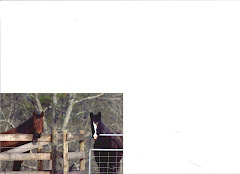
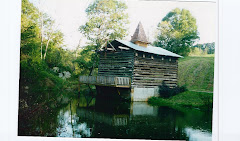


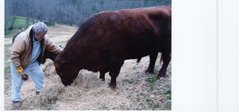
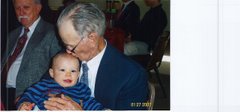
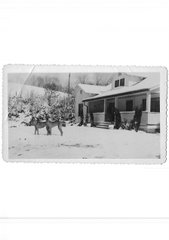

No comments:
Post a Comment